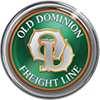If you notice any classification changes on your BOL, check with your LTL freight carrier to see what they think may have changed. Your carrier should be a good partner in helping you better understand how these updated classifications may impact your business.
Watching for NMFC updates may sound like an arduous task, but it does not have to be. By keeping an eye on the outcomes of tri-annual FCDC meetings, and staying in contact with your LTL carrier, you can prepare for classification changes without breaking a sweat. For questions or concerns related to the NMFC, Bill of Lading, or more, reach out to your Solutions Specialist or get in touch with us today.
